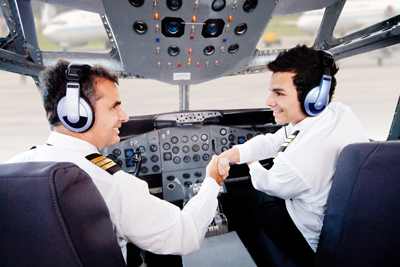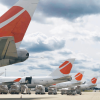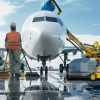 It is no secret that crew-related costs typically represent 10-20% of an airline’s cost structure – as much, if not more, than any other cost bucket, except fuel, at least before its recent drop in costs. Naturally, reducing the size of cockpit crews for commercial aircraft has been a topic of theoretical discussion among aerospace industry representatives for many years now. Nevertheless, while today realization of such a solution is far less science fiction than it was a few years ago, the possibility of its actual implementation still remains in question.
It is no secret that crew-related costs typically represent 10-20% of an airline’s cost structure – as much, if not more, than any other cost bucket, except fuel, at least before its recent drop in costs. Naturally, reducing the size of cockpit crews for commercial aircraft has been a topic of theoretical discussion among aerospace industry representatives for many years now. Nevertheless, while today realization of such a solution is far less science fiction than it was a few years ago, the possibility of its actual implementation still remains in question.
In 2010 Ryanair's CEO Michael O'Leary made another one of his controversial statements, declaring he wants to eliminate co-pilots in his Boeing 737 jets. In an interview with Financial Times he argued that they are essentially unnecessary in modern aircraft because most of the flying is highly automated. “In 25 years with over about 10 million flights, we’ve had one pilot who suffered a heart attack in flight and he landed the plane,” he told the paper. While O’Leary is well known for making far more outrageous comments, his thoughts on single-pilot operations are not new to aviation, and are even backed by some of the industry players.
For instance, in 2013 a big European research programme has begun to look at the possibility of a single-pilot flight deck for commercial operations. The project, called ACROSS (“Advanced Cockpit for Reduction of Stress and Workload”), is funded with €30 million and brings together a team of 35 industry and research partners, including such giants like Thales, Airbus and Boeing. Moreover, NASA has recently reported it’s advancing an airliner flight deck of the future that features one seat in the cockpit for a captain and one on the ground, occupied by an operator filling the role of either “super dispatcher” or first officer. However, the actual benefits of such a concept remain ambivalent.
“Co-pilots are currently employed on flights to monitor the other pilot and intervene if there is a problem or share the work if there is too much for one person to do. So, if new  technology could carry out all those functions, theoretically we wouldn’t need a second pilot anymore,” comments Skaiste Knyzaite, the CEO of AviationCV.com. “However, there are other important questions to be asked, even if their importance is more for the long-term. Where will the PICs of the future come from if they have no apprenticeship as first officers? Can new pilots go straight to command? Would you mind if the only pilot on your A380 was a recent piloting graduate?”
technology could carry out all those functions, theoretically we wouldn’t need a second pilot anymore,” comments Skaiste Knyzaite, the CEO of AviationCV.com. “However, there are other important questions to be asked, even if their importance is more for the long-term. Where will the PICs of the future come from if they have no apprenticeship as first officers? Can new pilots go straight to command? Would you mind if the only pilot on your A380 was a recent piloting graduate?”
Five years ago, O’Leary argued that since regulations allow trains to operate with just one driver, the practice ought to be admitted at least for short-haul flights. According to Ryanair’s CEO, flight attendants could cover for co-pilots, who he stated are essentially required only to “make sure the first fella doesn’t fall asleep and knock over one of the computer controls.” However, while this scenario is already common place in the military with success, the situation is a little different when dealing with paying clients, therefore the risk factor is increased. After all, the international aviation system has reached unmatched levels of safety and reliability not only because of greater automation, but also thanks to a widely accepted global standard for cockpit behaviour and cooperation. In the meantime, there are some other obstacles the players are likely to face.
“Of course, airlines would like to reduce pilot costs. For example, instead of sending four pilots on a long-haul flight, they could send just two. Moreover, it may be the answer to the industry-wide worries that the worldwide pool of pilots will decrease over the next two decades while air-travel volume are expected to double. However, it is likely that current practicing pilots will not welcome this direction as it could potentially mean the end of their career. Moreover, current regulation is likely to be the real stumbling block to this progression,” shares the CEO of AviationCV.com “Nevertheless, one needs to take such developments with all the seriousness. After all, we might be on the verge of an industry-wide revolution.”





